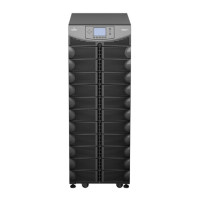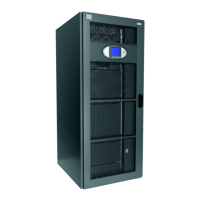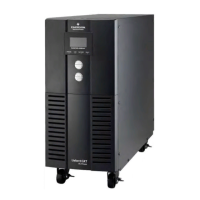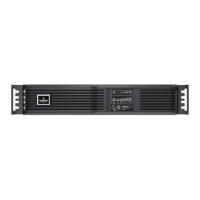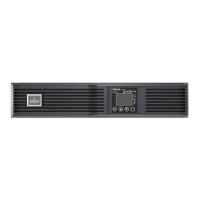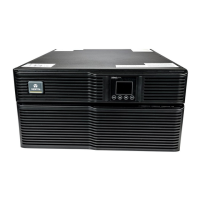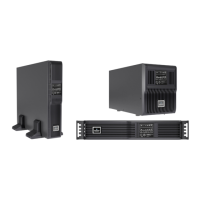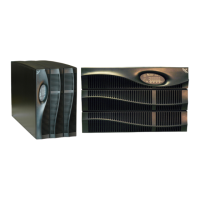Chapter 2
I
ns
t
a
ll
a
t
i
on
This chapter introduces the UPS installation. Each site has its peculiarity, so this chapter provides the guidance with
general installation procedures and methods for the installation engineer, who should conduct the installation
according to the actual conditions.
Warning: Professional Installation
The UPS equipment should be installed by a qualified engineer in accordance with the information contained in this chapter. If any
problem is found, please get in touch with Emerson local service center immediately.
Approved by the commissioning engineer, the UPS can be powered on.
Note: 3-phase 5-line for power input
The UPS can be connected to 3-phase 5-line (A, B, C, N, PE) TN, TT and IT AC power distribution system (IEC60364-3).
Warning: Battery Hazards
Special care should be taken into account when installing the battery. When connecting the battery, the voltage of the battery
terminal will exceed 400Vdc hazardous voltage.
•
Eyeshade should be worn to prevent injury from accidental electric arcs
•
Remove rings, watches and all metal objects
•
Use tools with insulated handles
•
Wear rubber gloves
•
If a battery leaks electrolyte, or is physically damaged, it must be replaced, stored in a container resistant to sulfuric acid and
disposed in accordance with local regulations
•
If your skin contacts with the electrolyte by accident, wash it immediately with water
2.1 Unpacking Inspection
After the UPS arrival, you should unpack it and check the following items:
1. Visually inspect the UPS appearance for transportation damage. If any problem is found, please notify the carrier
immediately.
2. Check the accessories and model against the delivery list. If any problem is found, please notify the dealer
immediately.
2.2 Location
To extend the UPS life, the selection of the UPS location should be:
•
Convenient wiring
•
Adequate operator access area
•
Well-ventilated location to meet the heat rejection requirement
•
Non-corrosive gas surrounded
•
No excessive moisture and heat sources
•
Free of dust
•
Compatible with fire-fighting requirements
•
Temperature of operation environment complies with the specifications, see Table 1-2 for details
